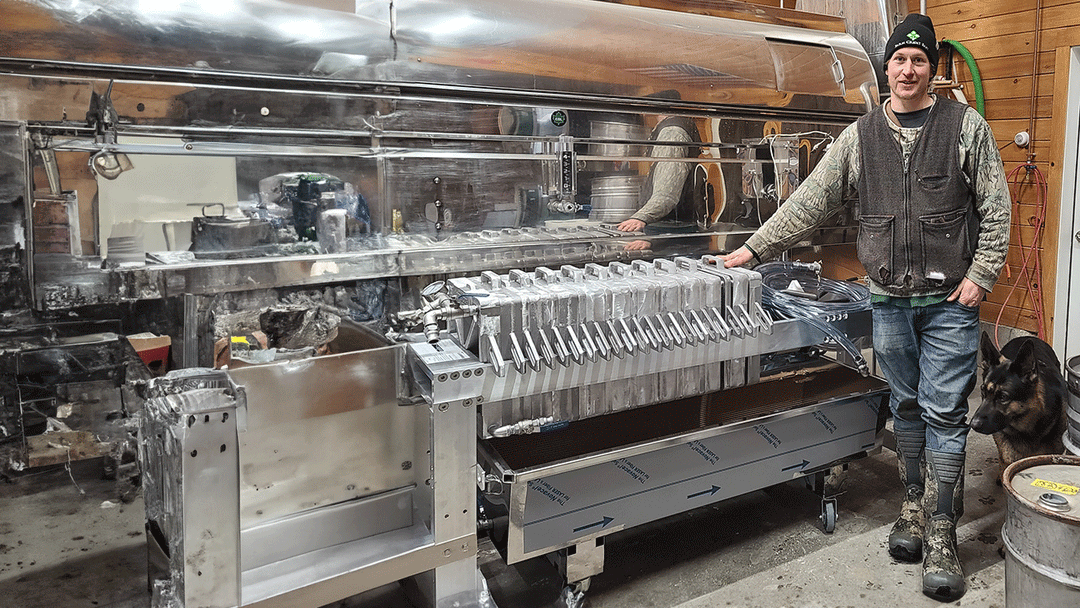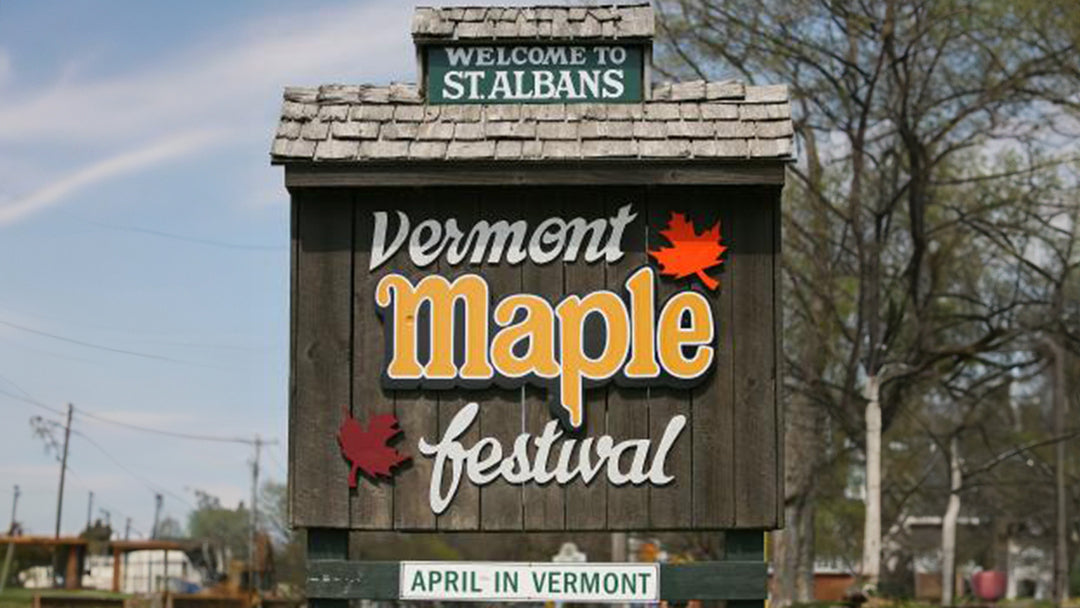Belgian Waffle Recipe
This Belgian waffle recipe was spurred on by the farm's recent purchase of a new waffle iron. Before the fancy new one we currently use, I remember growing up on rectangular waffles from my great-grandmother Eleanor's Son-Chief Series 9132R Waffle Iron manufactured in the early 1960s. Being that the new machine produces beautiful, round, deep-pocketed waffles, we thought that it was high time to experiment with light and fluffy Belgian waffles.
Belgian Waffles Vs. Regular Waffles
For myself, I grew up eating what I'll refer to as "regular waffles", delicious certainly, but the recipe is essentially the same as what you would make for pancakes. It wasn't until I spent a year or more living in Europe that I discovered these things known as "Belgian waffles". Crispy on the outside, light and fluffy on the inside, kind of like biting into a sweet cloud. Once you've had one there's no mistake that it's something different.

Now, I've heard it said that what separates a Belgian waffle from a regular waffle is the thickness and depth of the individual pockets. I don't think this is necessarily true, as I've had thinner, "American style" shaped waffles in Europe that maintained the same cloud-like consistency. Belgian waffles are also sold differently, they're more of street food that is dressed up with different confectionaries, served from a cart or takeout window. An iron with deep pockets does translate nicely for Vermont maple syrup though, as you can fill them right up! But, any waffle iron will do, don't let that be a barrier in giving these a try.
So that leads to the main difference between Belgian and regular waffles, the use of a leavening agent. A leavening agent is an ingredient that provides the cloudlike experience I discussed above, in this recipe we're using baking powder and egg whites. More on these in the next few sections.
How to fold in egg whites
As I was tweaking this recipe to include our signature maple twist, my inexperience as a baker and confectioner began to shine through. If you notice, my mom Karen is on the byline for many of the recipes on our site, especially the baked goods. She has a big part in this one as well, except I'm the one writing. In this case, my inexperience was in whipping and then folding in egg whites to the waffle batter.
What I'm about to tell you is what my mom told me as we were making these. Before folding in your egg whites you need to "beat some air into them". This can be done with a handheld or countertop mixer. The term, "beating egg whites to stiff peaks" is fitting because that's what you're looking for. The process is simple really, beat the egg white mixture until the point when you remove the beater from the mixture the eggs don't fall back on themselves, instead of standing upright in a stiff peak. This takes approximately 5 to 7 minutes of vigorous whisking, which is why I lend my full recommendation toward an electric mixer as your implement of choice. Be careful not to mix too long though, as the beautiful, airy egg whites will collapse and become grainy.
We were going to put together a video on how to identify stiff peaks, but honestly, Thomas Joseph from Everyday Food knocks it out of the park with this video:
How to make Belgian waffles
To start, measure out your dry ingredients and sift through a flour sifter. In our case, we used my mother's grandmother's fine grain sifter she received as a wedding gift in the 1920s. Sifting breaks apart any clumps in your dry mixture and contributes to the fluffy texture you're looking for with this recipe.

Following this, get together your liquids (minus the egg whites). Pour them into your dry mixture and incorporate everything while being careful not to over-stir. Not over-handling is a common theme throughout this recipe. Once mixed, beat your egg whites to stiff peaks as described in the previous section. I recommend folding in your beat egg whites a third at a time. Folding is just like it says, I slide my spatula down one side of the bowl and flip the mixture over the egg whites three to four times. It's ok to see bits of the egg white mixture once you're done, they'll be pressed together when you pour into your waffle iron.

We set our Cuisinart Belgian waffle maker on setting 4 of 6, but if you like them a bit crispier feel free to crank the heat up. The most important consideration is waiting for the iron to preheat before beginning to cook.
Frozen Belgian waffles
For a large family like ours, which now includes a few hungry grandchildren, making a double batch is a no-brainer. These waffles freeze wonderfully, and if you heat them on medium heat in your toaster, or 275°F for a few minutes in your oven they taste nearly as good as the day you made them. I recommend freezing them in a gallon freezer bag once cool, this will prevent the warmth from condensing leaving a bunch of frozen water crystals in your bag.
Ingredients:
- 2 cups of flour
- 1/4 cup of Amber Rich Taste real maple syrup
- 1 tablespoon of baking powder
- 1/2 teaspoon of salt
- 1 1/2 cups of milk
- 1 tablespoon of vanilla
- 4 large egg whites
- 2 egg yolks
- 8 tablespoons of melted butter
Directions:
- Sift your dry ingredients into a large mixing bowl.
- Incorporate your liquids (excluding the egg whites) in the sifted dry ingredients and mix, while being careful not to over stir.
- Whip egg whites to stiff peaks (5 minutes or so depending on your mixer and speed setting)
- Fold the egg whites into the batter in thirds while being careful not to over stir again, this is how you get the light, cloud-like texture!
- Pour into your pre-heated waffle iron and cook to completion.







Hi Linda, I haven’t tried it but I can’t see why you couldn’t substitute heavy whipping cream for milk. I researched this a bit and I found that people have added a bit of water to make the texture correct. For example, in our recipe calling for 1 1/2 cups of milk, you could use 1 cup of heavy cream and add 1/2 cup of water. If you do give this a try I’d love to hear your feedback!
Can you substitute heavy whipping cream for milk?
Leave a comment